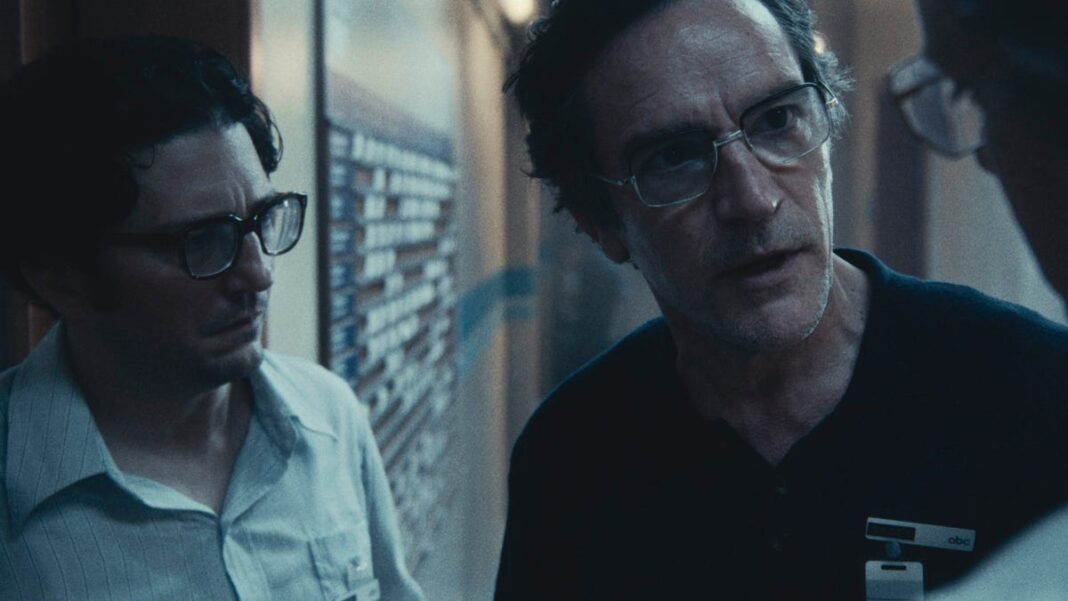Fact-checking ‘September 5’: The true story of the Munich Olympics massacre
Spoiler alert! We’re discussing details from the movie “September 5” (in theaters now), which tells the story of the hostage crisis at the 1972 Munich Summer Games. Beware if you haven’t seen it yet.
Movies about real events have to walk a fine line between the documented truth and the needs of storytelling. That becomes particularly difficult when the subject matter involves crime.
“September 5” walked that fine line spades as it set out to retell the story of Sept. 5, 1972, when eight Palestinian Black September terrorists took 11 Israelis hostage at the Munich Summer Games. The terrorists demanded the release of more than 300 Palestinians and non-Arabs who were imprisoned in Israel on various charges. Ultimately, five terrorists and all 11 athletes and coaches were killed. Though the movie hews very close to what happened that day, the timeline is compressed.
“If we did this movie in real time, it would have been 22 hours long,” says director Tim Fehlbaum.
The filmmaker elected to re-create that terrible day in a taut 95 minutes, focusing specifically on how the team from ABC Sports pivoted to a horrific news story for the ages.
Were Roone Arledge and Geoff Mason real ABC Sports staffers?
Yes. Roone Arledge went on to become a legend at ABC, ultimately overseeing the network’s news division before he died in 2002 at age 71. Geoffrey Mason has won dozens of Emmys for his work in sports event production, working for a range of networks over his long career.
In “September 5,” Arledge is played by Peter Sarsgaard, and Mason is portrayed by John Magaro. Fehlbaum says Mason provided invaluable assistance for his film.
But some characters in the drama were composites, a decision made to keep the story moving. For example, a German staffer hired by ABC Sports named Marianne Gebhardt (Leonie Benesch) proves invaluable because she is able to translate German radio reports about the unfolding crisis. But that job was actually done by a variety of employees that day, Fehlbaum says.
“There were many instances where certain functions (of the television production) were handled by various different people,” he says.
Did Roone Arledge really defy orders from ABC headquarters to hand the story over to New York?
Yes. The ABC Sports team was in position to cover the Olympic Games when the hostage news broke, but after a few initial reports, Arledge was instructed to hand the story back to the network’s New York headquarters.
But Arledge, whose quick thinking catapulted him to success in ABC’s news division, resisted. He ordered massive cameras tethered by long cables into the streets to better capture the hostage area; gave the green light for staffers to pose as Olympians to smuggle footage in and out of the Olympic Village; and pushed back on orders to relinquish the story to a news desk 4,000 miles away when the drama was unfolding within eyesight.
Is that real ABC Sports anchor Jim McKay in ‘September 5’?
Actual ABC footage of legendary sports host Jim McKay is interwoven into the film.
This comes into play primarily when TV monitors in ABC Sports’ Munich control room are showing the same events the network broadcast in 1972, including updates and interviews by McKay.
The lone news reporter in the mix, future ABC News anchor Peter Jennings, is played by Benjamin Walker, who has a scene in which he argues to be sent into the field close to the condo where the hostages are being held.
Did news reports incorrectly suggest the hostages had been freed?
Yes. Around midnight on Sept. 5, German officials erroneously announced there had been a successful police operation at a nearby airbase, where the hostages and kidnappers had arrived to board a plane to Cairo.
But a few hours later, Reuters and other news agencies had to correct that information: The hostages and terrorists had been killed in a firefight with German police at the airfield.
McKay told his global audience: “They’re all gone.”
Is the broadcast equipment shown in ‘September 5’ the real thing?
The biggest sleight of hand in the film belongs to production designer Julian Wagner, who scoured the internet to buy as much gear as possible that was used in and around 1972, no small task because such equipment was junked decades ago.
“Nothing we found worked, so we had to refurbish it all so that it did,” Wagner says. “For a while, we were worried (the equipment) would either explode on camera or be too loud during filming. But it worked out. At one point I asked my team, ‘Do we have it all?’ And they said, ‘There’s nothing else out in there in existence that we don’t have.’ So that felt good.”
Does ‘September 5’ show actual footage of the hostage crisis at the 1972 Munich Summer Games?
In addition re-creating the team’s cramped newsroom, Wagner also carved out smaller rooms in which Fehlbaum could “trap the actors” for intense discussions in the heat of the broadcast moment.
Some of those talks focus on big-picture journalism questions, from whether to actually have live cameras trained on potentially deadly scenes to debates over whether showing terrorists in action actually played into their desires.
When it came to showing images of the terrorists in “September 5,” Wagner says, Fehlbaum went with a combination of now-famous images from the real event and filmed re-creations.
“It’s a wild mix, and some of the actors couldn’t even tell which was which,” Wagner says. “But we felt we had a responsibility to the real victims, so you won’t see any real images of them. That was the only and the right thing to do.”

